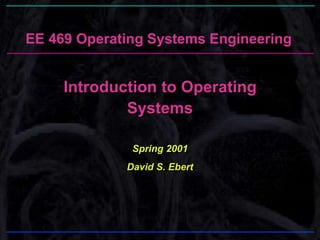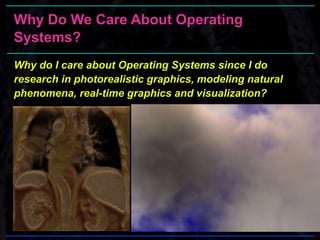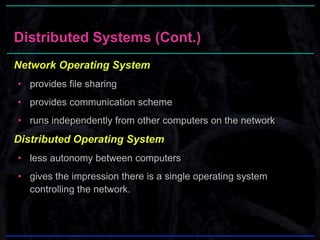This document provides an introduction to the EE 469 Operating Systems Engineering course. It discusses the importance of operating systems for applications like computer graphics, and provides definitions and history of operating systems. Key points covered include the roles of operating systems in resource allocation and control, the evolution from batch to time-sharing systems, and different types of systems like parallel, real-time, and distributed systems.






























